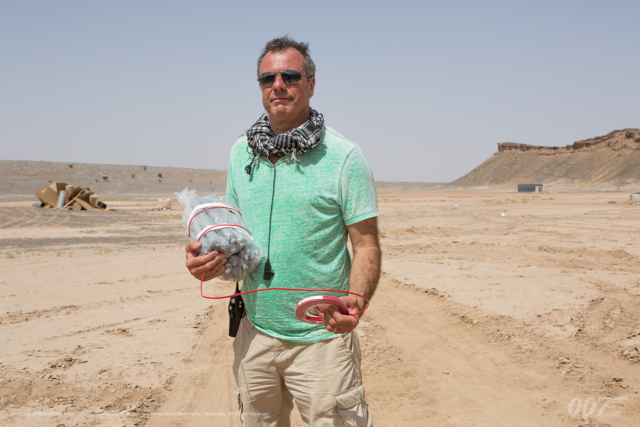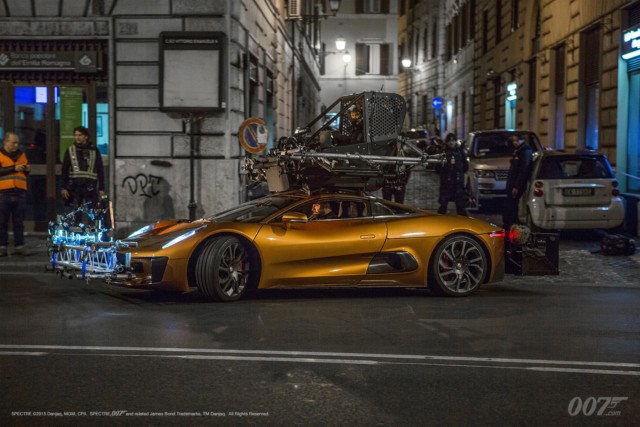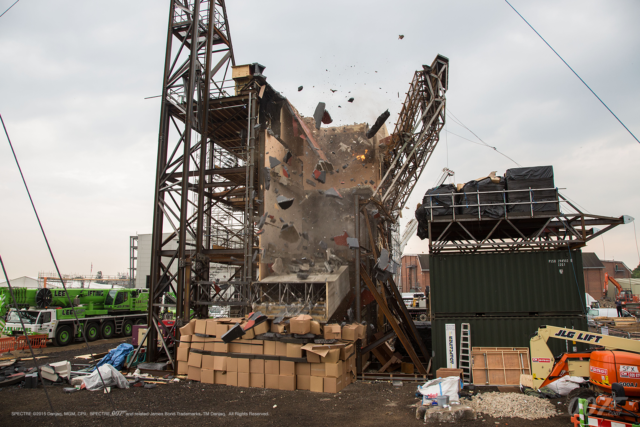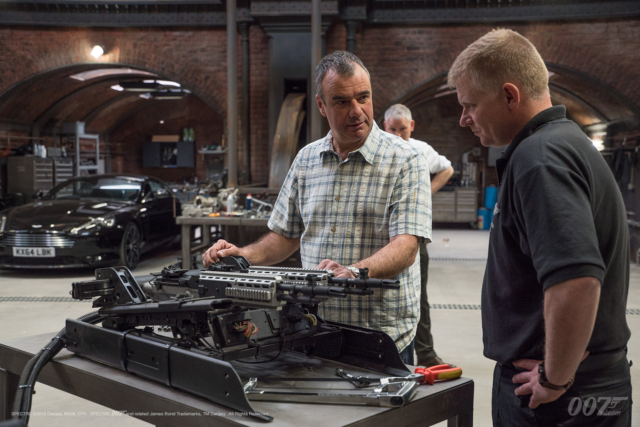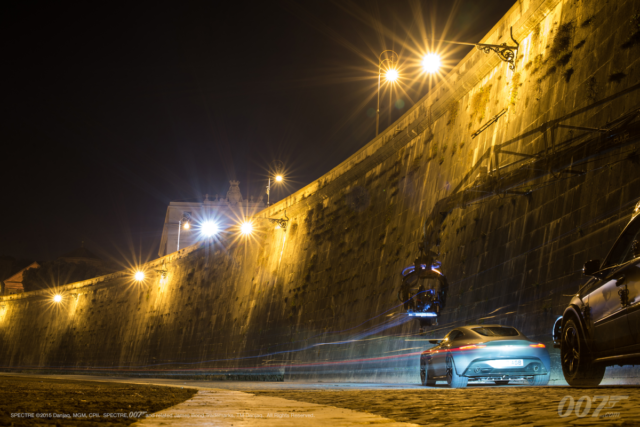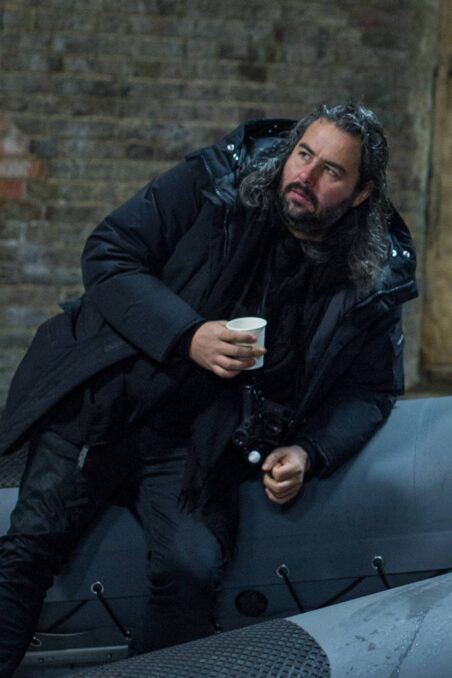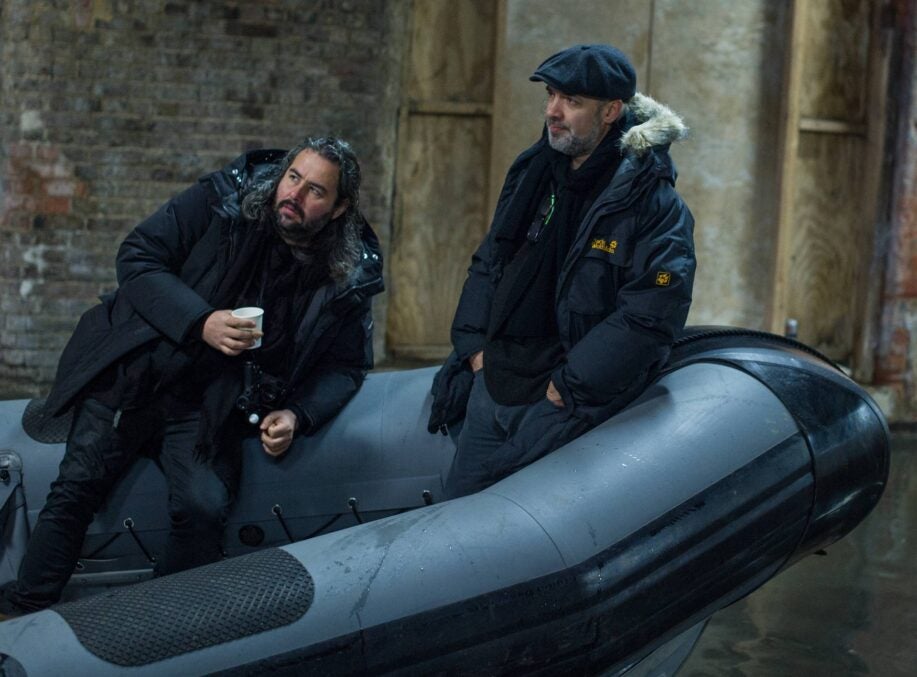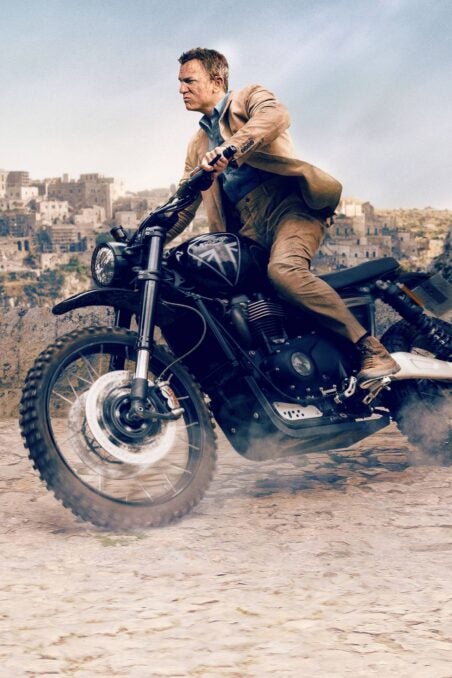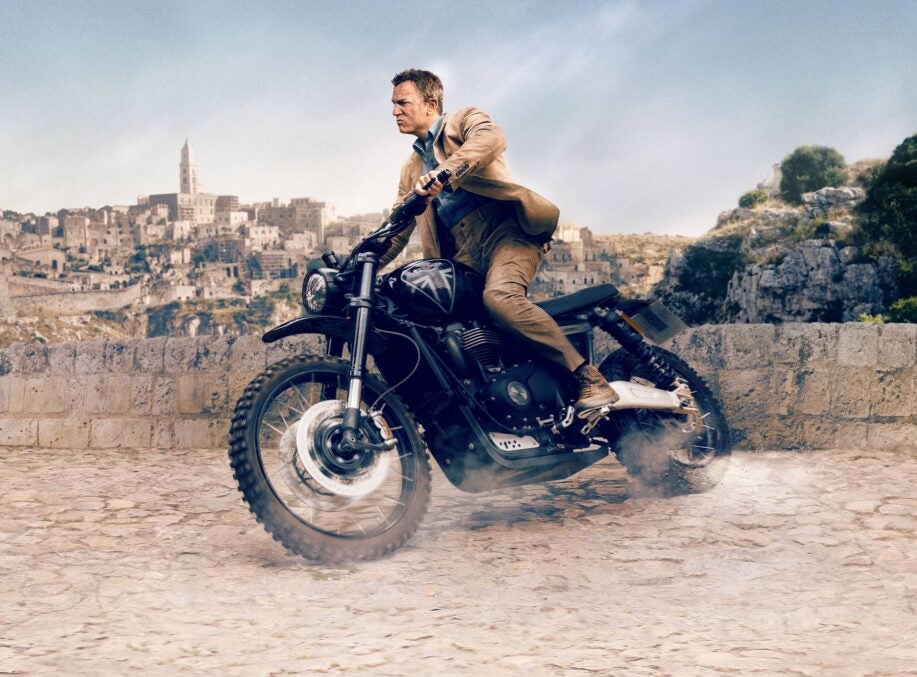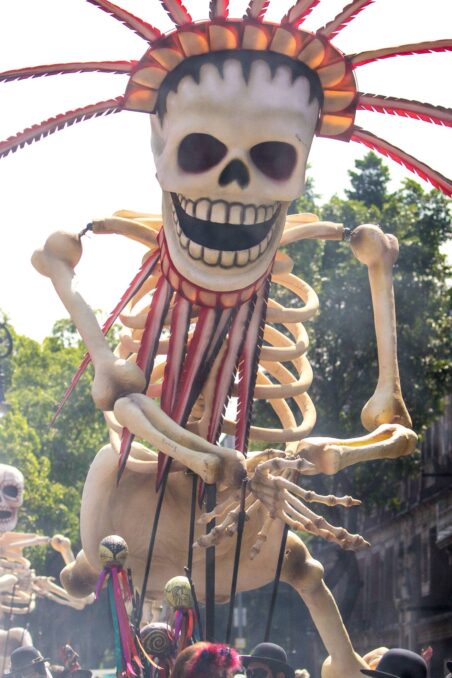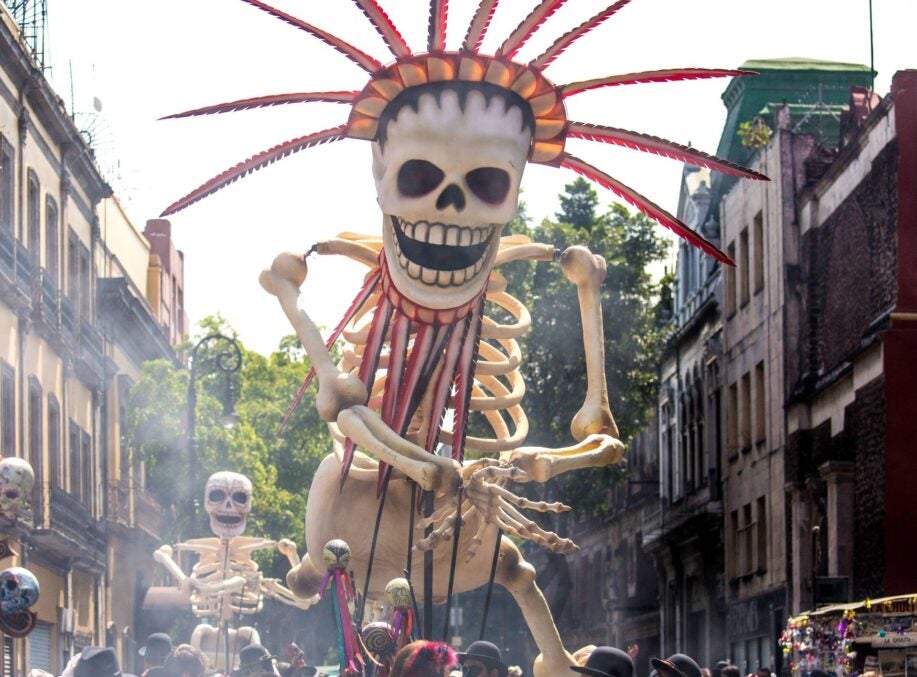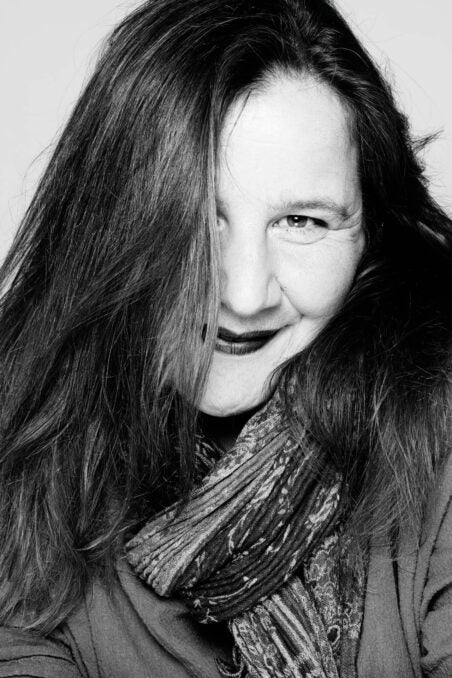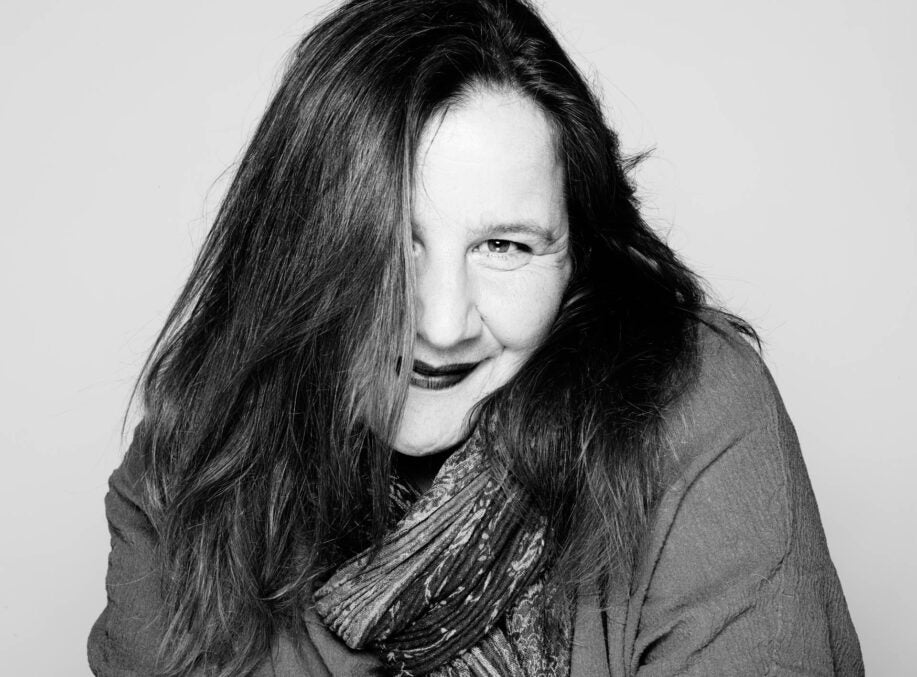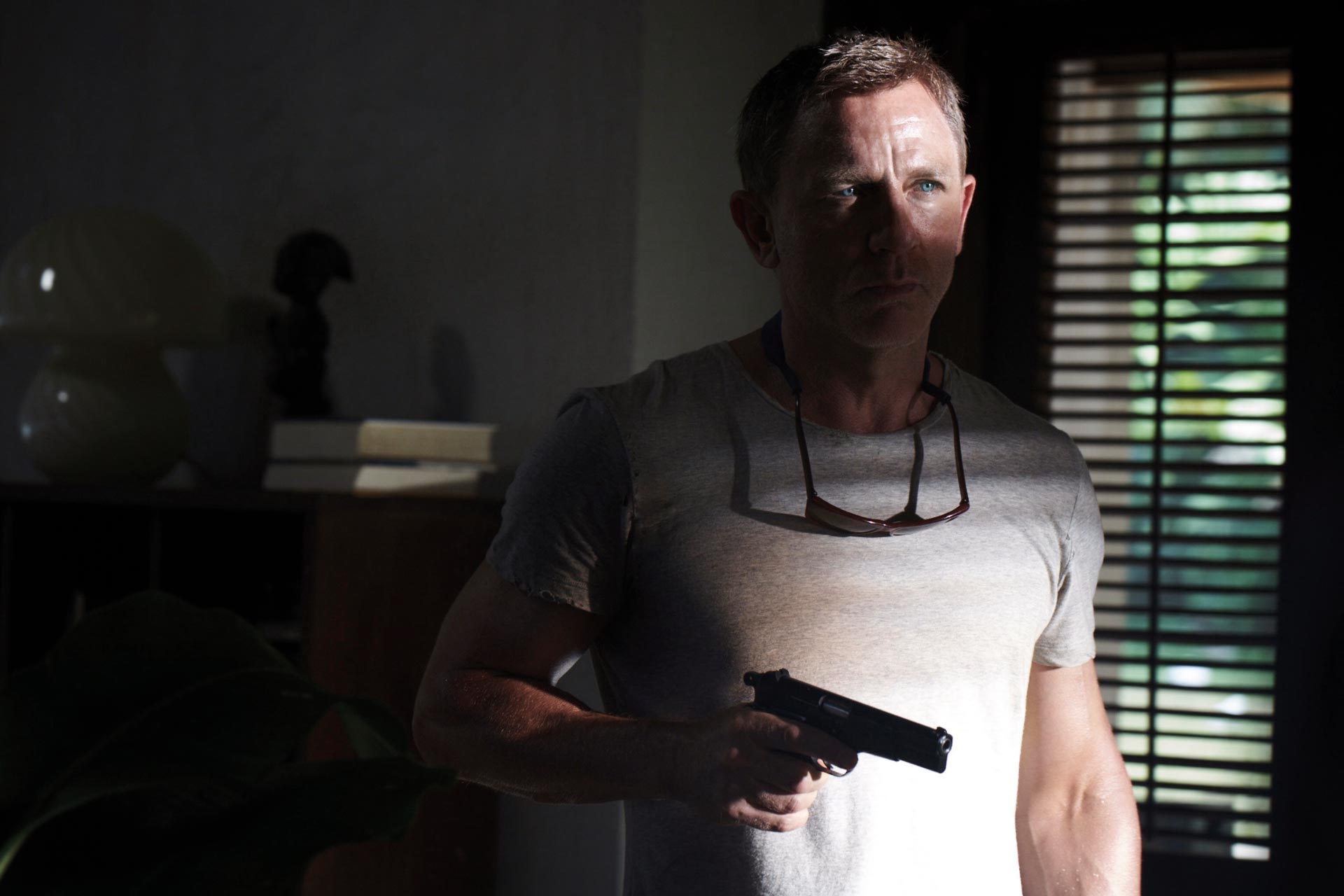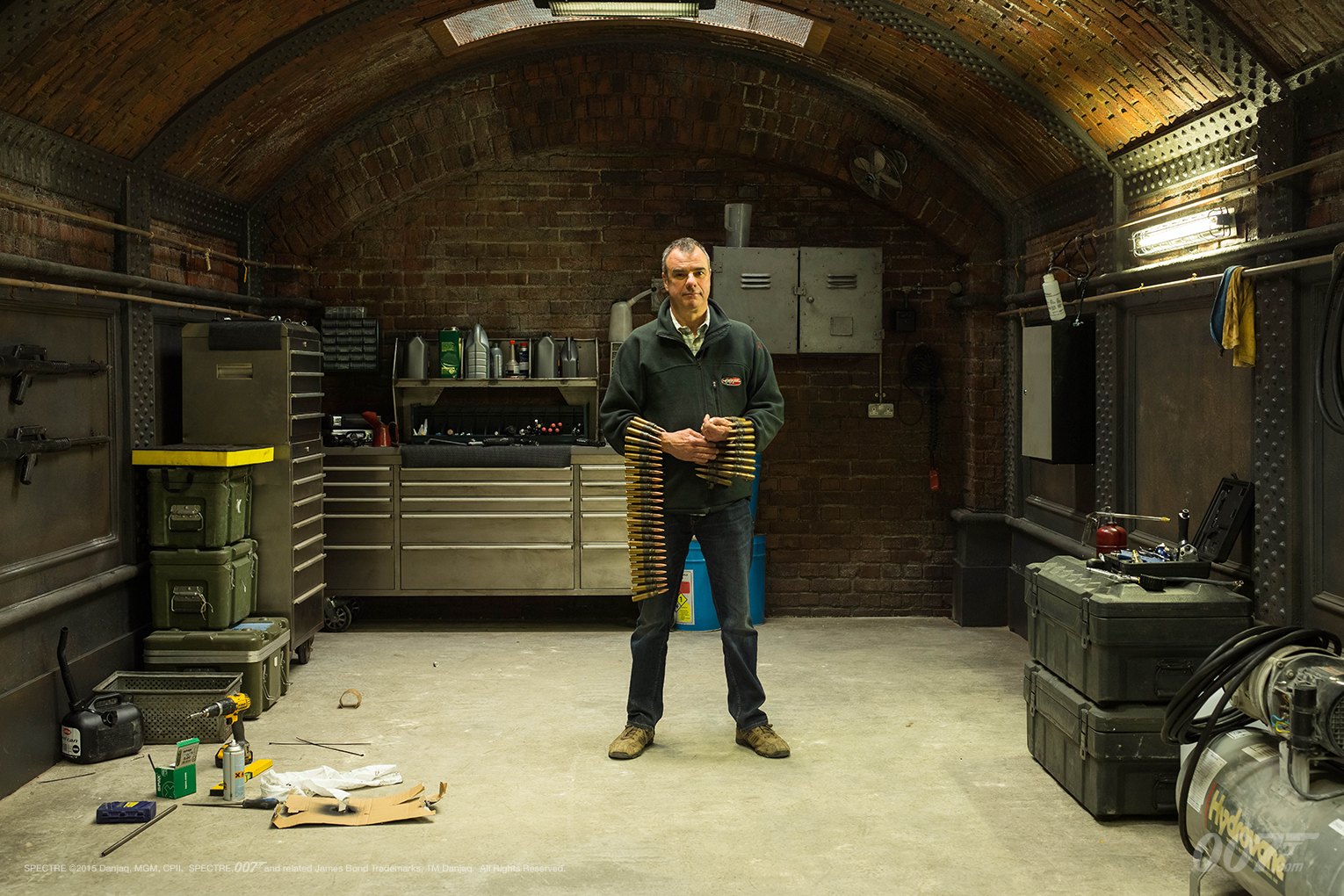

Chris Corbould Interview
A Q&A with Spectre’s Special Effects Supervisor
The Special Effects Supervisor of Spectre, who has just been awarded a Guinness World Records™ title for the Largest Film Stunt Explosion, on keeping things real, filming in challenging locations and his favourite Spectre stunts…
Q Sam Mendes has a philosophy of ‘doing things for real’. What challenges does this bring?
Sam is a big advocate of “doing things for real”. He has vast experience in directing and producing theatre where everything is for real and I believe that he is most comfortable in an environment where actors can react to real events occurring around them. However he is also a total pragmatist and quickly sees the sense when the CGI option is the most practical one or even better, a mixture of the two. Although Sam has very specific ideas about how the action is to play, his main priority is the storyline and characters, vital ingredients for a good film.
Q How do you go about shooting a big scene, such as the car chase in Austria?
The following description is a basic method of preparing for an action scene but sometimes the order of these processes may differ according to Director and Producer preferences. The first stage of the process usually involves sitting round a table and discussing the scene as written in the script with the Director, Director of Photography, 2nd Unit Director, VFX Supervisor, 1st Assistant AD, Stunt Coordinator and myself. This is really a fact finding mission where everybody pitches in ideas and methodologies of how and where to shoot the sequence. After this meeting the Director usually instructs a storyboard artist to produce a pictorial book showing each individual shot that will make up the sequence. Once this document is produced the same creative team would then probably meet again and further discuss all aspects of the filming process. In the background the Director will have given instructions to the locations department about key areas that need to be located to film the sequence, Once photos have been shown to the Director a location scout with the creative team takes place to visit the various options to film the scenes. It is sometimes a fine juggling act to decide on a location that the Director likes but also that is logistically right for every department to do their job.
The job of preparing the Special Effects for the scene then commences with each individual effect broken down and analysed by myself and senior SFX crew. We will discuss mechanical rigs, types of explosions, crew levels and scheduling of equipment/crew movements. Next comes one of the most important stages which is the testing phase. Every rig and explosion is tested and videoed, sometimes many times. Once results have been achieved that I am happy with I will sit down with the Director for his input into the tests. This procedure may be repeated several times until the Director is confident and happy with all aspects.
We can then begin the logistical phase of loading equipment and materials ready to be transported to the location. In the case of the Austrian sequence the list comprised of 10 Land Rover Defenders, 7 Range Rover SVR, 6 BN2 Islander Planes, 4 Double Track Skidoos, 2 x100 Ton Cranes, 2 Glider Winches, 12 shipping containers of equipment/materials and a final total of 30 SFX Technicians. Once the equipment has arrived the second phase of testing takes place in the snowy conditions required for the sequence. These conditions obviously bring a new set of challenges to deal with but it is all part of the process. One particular part of the sequence involved hanging a full size plane on wires between two cranes which were 450 metres apart. The plane was winched forwards at 50 mph to give the impression that it was flying down a narrow valley of trees with branches clipping the wingtips. This would obviously have been too risky to do with a real flying plane. However, at one stage we had to slow down the plane on wires as it started to glide on its own.
Finally the shooting crew will arrive and film every part of the jigsaw needed to edit together the final cut. There is much improvisation along the way as many diverse problems raise their head but the crew, headed by Ian lowe, were experienced, competent and dedicated to deal with every eventuality.
When the sequence is complete and the film is approved by the Director the whole unit is packed up and either returned to the UK or moved onto the next location, which on Spectre, was Rome.
Q What was the biggest challenge of shooting so many scenes, in various locations all over the world?
As you can see from the description above the logistics are very extensive. On Spectre we filmed in four different countries apart from the UK, namely, Austria, Italy, Mexico and Morocco each having its own set of challenges. Obviously one of the biggest challenges is making sure we have the right crew and equipment in the right place at the right time. We also have to allow for the different climates such as the sub zero temperatures of Austria to the 50 degree heat of the Moroccan desert.
Q Talk us through the Aston Martin DB10 and Jaguar C-X75, what modifications did you make to them?
We worked very closely with both Aston Martin and Jaguar Land Rover/Williams to adapt the cars to perform all the requirements of the film. Particular detail was paid to the suspension system as both cars were required to do high speed jumps during the sequence. Neil Layton, my vehicle technical coordinator, was in constant discussions with both companies to ensure maximum specifications for each vehicle and the results were amazing. It was also fun to reintroduce some “optional extras”, namely gadgets, to the car which I know is a favourite for all Bond fans. I had previously collaborated with Aston Martin and Jaguar on Die Another Day where both companies excelled themselves in helping us create a fantastic sequence on an ice lake in Iceland. The chase in Spectre is even more spectacular.
Q For Spectre you had 10 Aston Martin DB10s that were made especially for the film. Does filming with a bespoke car bring an added pressure and are you ever worried about not having enough cars?
It’s a funny thing because I only found out that they had made ten cars near the end of the film. We were filming with only eight cars and at times came close to running out. There were two pristine hero cars, two cars with rooftop remote driving pods and four stunt rigged cars, two of which had the gadgets fitted to. So although we had eight cars, most of them had specific roles to play and were not necessarily quickly interchangeable. It is a constant worry that there is the potential for a shortage of cars and consequently they are nurtured throughout the film so that they don’t fail mechanically. I certainly would have slept better if I had known that there were two more cars at our disposal, maybe that’s why they didn’t tell us.
Q Spectre is your 14th Bond film. How do you feel your role as Special Effects Supervisor has developed over your time working on Bond?
The role of Special Effects Supervisor has developed immensely over the years. Obviously the introduction of digital effects was a massive change to the way we work but in addition, the use of computers to control hydraulics, pneumatics, winches and rigs is greatly advantageous. The crews have generally got much larger and the emphasis tends to be very engineering orientated. I have found over the years that I have tended to work closer and closer with the Director on script ideas and action concepts and consequently, I now have a yearning to direct myself.
Q Out of all the scenes you shot in Spectre which one is your favourite?
I have two favourite scenes, one being a full size helicopter crash and the other, was the huge explosion in Morocco. The helicopter crash was executed in a similar way to the underground train in Skyfall except that this time we had to deal with much faster speeds whilst puppeteering it to spin sideways as it came to a halt. Dan Homewood was my project leader on both the train and helicopter rigs but now is wondering what we might have to crash on Bond 25.
Q Spectre was awarded a Guinness World Records™ title for the Largest Film Stunt Explosion, what was it like to arrange that stunt in Morocco?
The explosion in Morocco was interesting in that I didn’t just want to do a huge explosion. I wanted it to have shape and a progression as it spread through all the connecting buildings over an area of ten football fields. Conveniently, we were filming in the desert in Morocco without a pane of glass or habited building for miles around, both of which are normal cause for concern when doing an explosion of this size. It also gave me the opportunity of using the fairly new technology of programmeable detonators where each detonator is programmed to a thousandth of a second. I was introduced to the system by Charlie Adcock of Event Horizon Ltd. He advises me on all the large scale pyrotechnics that I dream up and together we produce some spectacular results.
Q And which was the most difficult to film and why?
The most difficult scene to film was the collapsing building where Bond is running across a rooftop as it collapses behind him. We guided a section of building down a track which impacted on a breakaway area of rooftop causing the three floors below Bond to collapse. It was a very close collaboration between Special Effects and VFX. It took us a long time to develop and feel confident that we had all the safety measures in place to achieve the shot. Once the impact had taken place Bond falls through the building in a chain reaction of collapsing levels, all of which were controlled using hydraulic mechanisms and safety systems. Project leader Kevin Herd and my team spent many hours deliberating over different methods to achieve this effect
Q Empire reported that you enjoy the mechanical side of big rigs more than blowing things up. What is it that you find so appealing about these mechanical rigs in particular?
I do love the whole process of working with my team to research, develop, fabricate, test and film the big mechanical rigs. There is something challenging about the problem-solving process and inspirational about the dedication of my creative engineers to look at all options to overcome the obstacles. Rigs such as the Casino Royale sinking house, the Skyfall underground train crash and The World Is Not Enough caviar house sequence are typical examples. There is no other feeling that compares when the whole plan comes together and spectacular footage has been achieved after months of hard work.
Q What are your thoughts on CGI? Is it more of a help or a hindrance to your role as Special Effects Supervisor?
CGI is seldom a hindrance and is a fantastic tool when used wisely. Some of my practical effects would not be possible without the help of CGI and many of my effects are greatly enhanced by digital tweaking. CGI has also made filming a much safer environment to work in as many extra safety features are digitally removed whereas this was not possible a few years ago. I personally believe that our two departments work in complete harmony these days to produce the most realistic effects.
Q What element of your job do you enjoy most?
Coming up with the creative ideas to feed to the Director giving him all the possible ingredients to formulate the most exciting sequence for the audience. I also get a great thrill from seeing my Special Effects crew rise to every challenge and work tirelessly to produce a fantastic end result. This includes the workshop supervisors, floor supervisors, senior technicians, CAD designers, engineers and especially Lynne, my buyer/coordinator/wife who has been responsible for purchasing every item of Special Effects equipment and materials for my films over the last twenty years, along with being my spiritual backbone . I also enjoy working with a lot of the unsung heroes of the film industry like the construction crews, electricians, propmen, accounts personnel, production office personnel, drivers, assistant directors, location dept etc. They are rarely mentioned but are vital to the success of any film.
Q Are there any particular difficulties when it comes to shooting scenes in large cities?
Large cities can be problematic. Rome is a classic example. The city comprises of two thousand year old buildings and we wanted to do a 100 mph chase with two supercars through it. Naturally there was some hesitation on their part and all credit to the locations department for gaining the permissions. The knock on to Special Effects was that the cars involved had to be 100 per cent reliable. Our prime concern is for the safety of the drivers but another major concern was the wellbeing of Rome’s historic architecture. The cars were meticulously tested almost to the point of destruction so that we were confident that mechanical failure would not occur. Many features of the cars were strengthened and adapted to cope with the rigorous weeks ahead.
Q What is your favourite part of being the Special Effects Supervisor for Bond?
I love being given the opportunity and resources to showcase my skills and the talent of my crew. Michael G. Wilson and Barbara Broccoli have repeatedly encouraged me to explore new ideas and have consistently supported me in my wildest dreams. I was honoured to have worked with Cubby Broccoli on a few of my earlier films but I am now even more honoured to have remained part of the Bond family franchise over the last fourteen films. I adore my crew and many of them, including long standing floor supervisor Peter Notley, have been with me since I supervised GoldenEye I have also really enjoyed working with Daniel Craig who has been a huge part of our success. He consistently wants to be involved with all aspects of Special Effects, even rehearsing with us during his down time to achieve the most realistic results.
